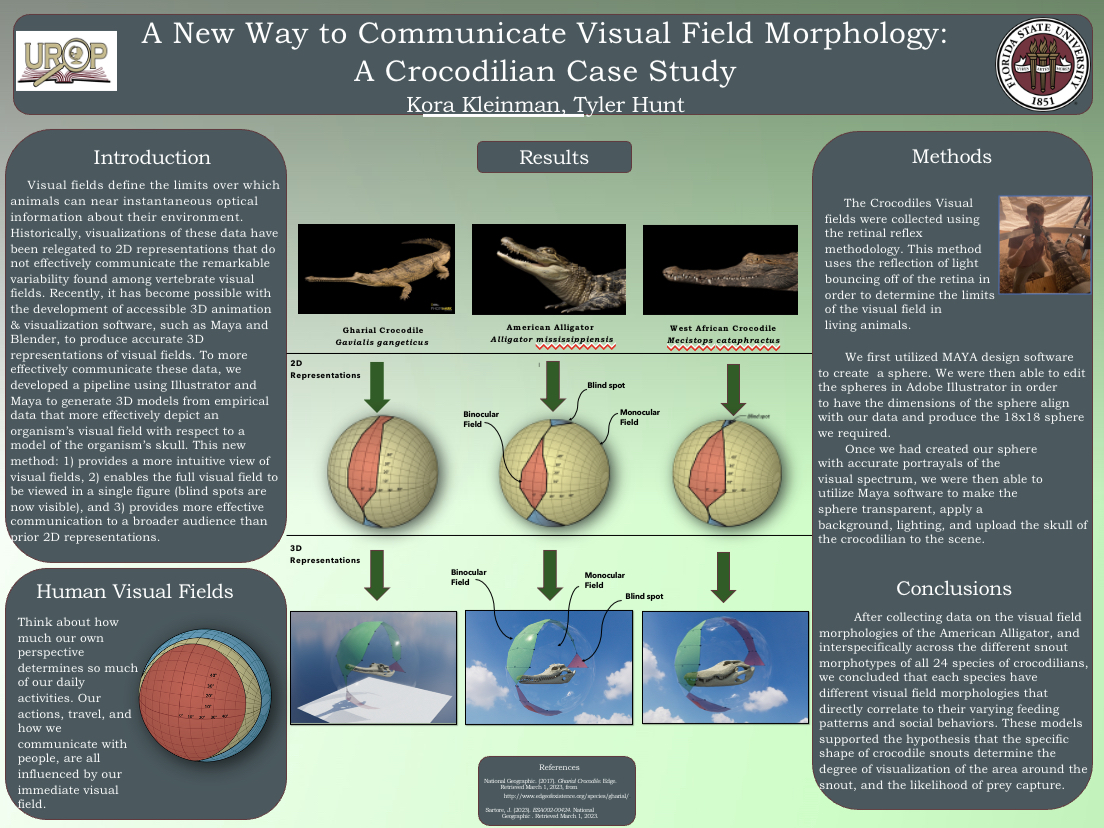Research Symposium
23rd annual Undergraduate Research Symposium, April 6, 2023
Kora Kleinman Poster Session 3: 2:45 pm - 3:45 pm/ Poster #201

BIO
I am a sophmore here at FSU on the pre-med track. Aside from my academics and research, I enjoy working out, spending time with my friends and family, and going to the beach. In the future, I plan on attending medical school and exploring research in genetics.
A New Way to Communicate Visual Field Morphology: A Crocodilian Case Study
Authors: Kora Kleinman, Tyler HuntStudent Major: Interdisciplinary Medical Sciences (Clinical professions)
Mentor: Tyler Hunt
Mentor's Department: Biology Mentor's College: Ecology and Evolution Co-Presenters:
Abstract
Visual fields encompass the area over which the eyes of an organism can gather light and therefore near instantaneous information about their environment. Visual fields can be divided into three primary regions: the binocular field (light detected by both eyes), monocular field (one eye), and blind zone. The shape of these regions has been shown to vary substantially across species and correlate with feeding modes and behavior in birds and mammals. My Advisor, Tyler Hunt, measured the in vivo visual fields of 10 crocodilian species of differing head shapes and ecologies to understand how visual fields vary with snout types. However, the unique visual fields he found among crocodilians made depicting these morphologies difficult using standard 2D depictions. Visual field data are inherently 3D, yet have historically been depicted primarily in 2D, limiting our ability to illustrate a full representation of the morphologies. The advent of user-friendly animation software such as Maya has now made it possible to represent these data in 3D. For this project, I developed a pipeline using Illustrator and Maya that enabled me to project the visual field data on a 3D sphere with a model of the crocodilian’s head placed at the center of the sphere. These models improve considerably on prior representations by depicting all three aspects (binocular, monocular, and blind zones) of the visual field simultaneously. Furthermore, the incorporation of the animal’s skull provides a more intuitive and biologically informative view of the visual fields and enables clearer communication to a broader audience.
Keywords: Animation, Crocodilian , Visual Fields


